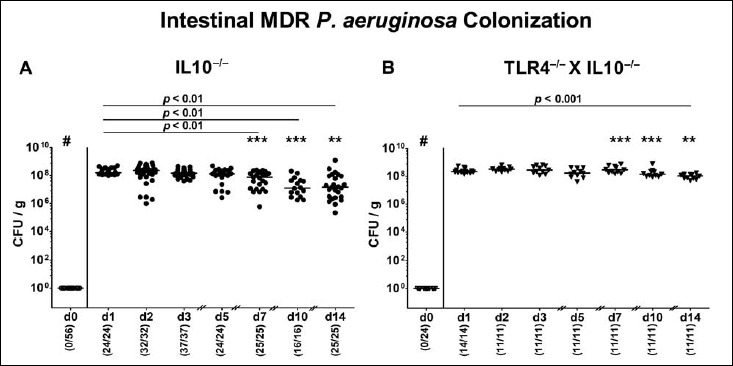Fig. 1.

Kinetic analysis of intestinal multidrug-resistant P. aeruginosa colonization properties following peroral association of secondary abiotic IL10–/– mice lacking TLR4. Secondary abiotic (A) IL10-deficient (IL10–/–; closed circles) and (B) TLR4-deficient IL10–/– mice (TLR4–/– × IL10–/–; closed triangles) were generated by broad-spectrum antibiotic treatment as described in Materials and methods section. Following peroral challenge with a clinical multidrug-resistant P. aeruginosa strain at day (d) 0, intestinal colonization densities were determined in fecal samples until d14 postinfection by culture and expressed as colony forming units per gram (CFU/g). Numbers of mice harboring P. aeruginosa out of the total number of analyzed mice (in parentheses), medians (black bars), and significance levels (p values) determined by Wilcoxon and Mann–Whitney U test are indicated. Asterisks illustrate significant differences between genotypes at defined time points (*p < 0.05; **p < 0.01; ***p < 0.001), # indicates significant differences (p < 0.001) between d0 and respective time points thereafter. Data shown were pooled from at least three independent experiments
